
Ask anyone about Barcelona, and the Sagrada Familia is probably the first thing that comes to mind. This incredible basilica by Antoni Gaudí is famous the world over, and its stunning architecture is truly admired. But even with all its fame, the Sagrada Familia holds many fascinating secrets and surprising facts that most people never discover. Beyond its famous look, it's packed with hidden details, deep symbolism, and amazing Sagrada Familia curiosities waiting to be explored.
In the following article by oneHOWTO, we explore 10 of the most interesting facts about the Sagrada Familia.
1. Gaudí wasn't actually the original architect
Contrary to popular belief, Antoni Gaudí wasn't the first architect of the Sagrada Familia. The project was initially entrusted to Francisco de Paula del Villar in 1882, who designed a conventional neo-Gothic church. However, after disagreements with the project's promoter, Josep Maria Bocabella, Villar resigned. It was then that the 31-year-old Gaudí took over in 1883 and completely transformed the design into the extraordinary structure we know today.
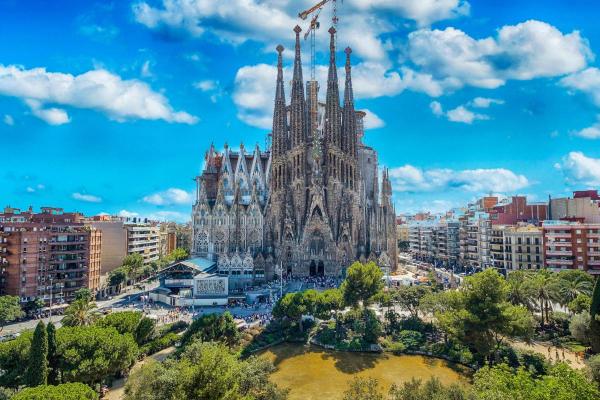
2. There's a hidden mathematical puzzle where all numbers add up to Jesus's age
On the Passion Façade, you'll find a fascinating mathematical curiosity, a magic square with 16 numbers. What makes this square special is that all rows, columns, and diagonals add up to 33, the age of Jesus Christ at his crucifixion. Contrary to what many believe, this mathematical element wasn't created by Gaudí but was added by sculptor Josep Maria Subirachs during the 1980s while working on the Passion Façade sculptures.
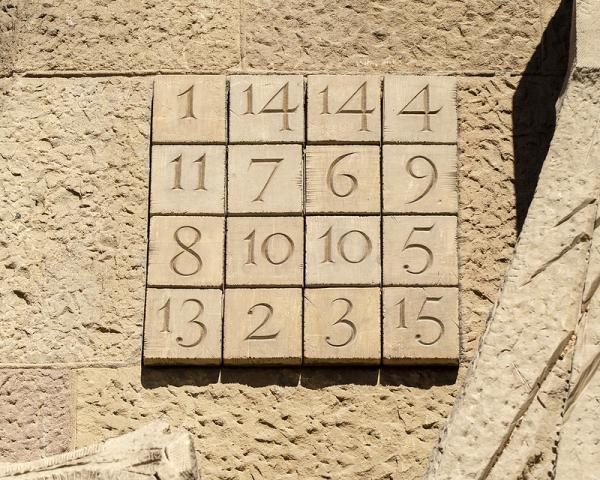
3. The entire interior was designed without a single straight line
One of Gaudí's most remarkable design principles was his rejection of straight lines. Inside the basilica, you won't find a single straight line, as everything is constructed to mimic the forms found in nature. Gaudí famously stated, "The straight line belongs to man, the curve belongs to God." The columns resemble trees growing from the floor to the ceiling, creating the sensation of walking through a stone forest.
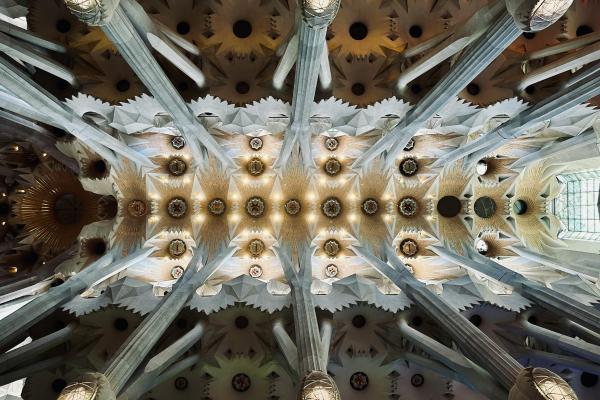
4. Gaudí himself is buried inside his unfinished masterpiece
The remains of Antoni Gaudí rest within his masterpiece. After his tragic death in 1926 when he was struck by a tram at age 73, Gaudí was buried in the crypt of the Sagrada Familia, specifically in the Chapel of Our Lady of Carmen. This makes the Sagrada Familia not just his greatest achievement, but also his eternal home. Only one other person is buried there, Josep Maria Bocabella, the initiator of the project.
5. Those colorful "fruits" on the towers have deep meaning
Ever noticed those colorful rounded shapes that crown some of the towers? They're not just decorative, they're actually symbolic fruits. Each one represents the fruits of the spirit and symbols of the Eucharist. This is just one tiny example of how Gaudí wove natural elements and profound religious symbolism together throughout the basilica.
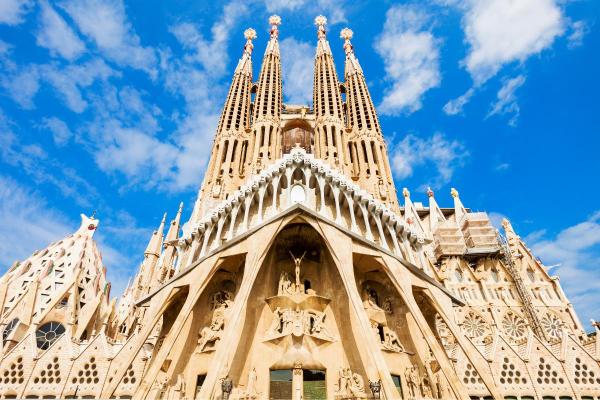
6. Your entrance ticket is literally helping build the basilica
Did you know when you buy a ticket to the Sagrada Familia, you're actually helping finish building it? Unlike most famous European cathedrals that received government funding, the Sagrada Familia has been funded entirely through private donations and visitor entrance fees since day one. Its full name, the "Temple Expiatori de la Sagrada Família" (Expiatory Temple of the Holy Family), hints at this funding model, as "expiatory" means it's built from donations as an act of spiritual atonement.
Explore more of Barcelona's cultural heritage in our guide to the Catalan flag and its significance.
7. Most of Gaudí's original plans went up in flames during the Civil War
Gaudí wasn't naive, he knew he'd never live to see his masterpiece finished. That's why he dedicated the last 15 years of his life exclusively to the Sagrada Familia, creating detailed plans, drawings, and models for future architects to follow. But here's the heartbreaking part, during the Spanish Civil War in 1936, anarchists set fire to his workshop, destroying most of these invaluable materials. Modern architects have had to piece together his vision from surviving fragments, old photographs, and publications.
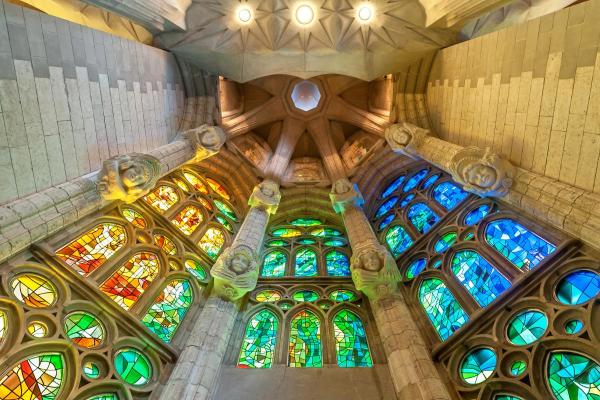
8. The three façades tell Jesus's life story
One of the coolest things about the Sagrada Familia is how its three main façades work as massive stone storybooks! Each façade represents a different chapter of Jesus's life:
- The Nativity Façade (east-facing): has joyful, nature-inspired decorations celebrating Jesus's birth.
- The Passion Façade (west-facing): tells the somber story of his suffering with stark, angular sculptures that feel almost skeletal
- The Glory Façade (south-facing): will be the largest and most ornate, representing resurrection and eternal glory.
Want to sound like an architecture expert on your next European vacation? Learn to distinguish between churches, cathedrals, and basilicas with our other article.
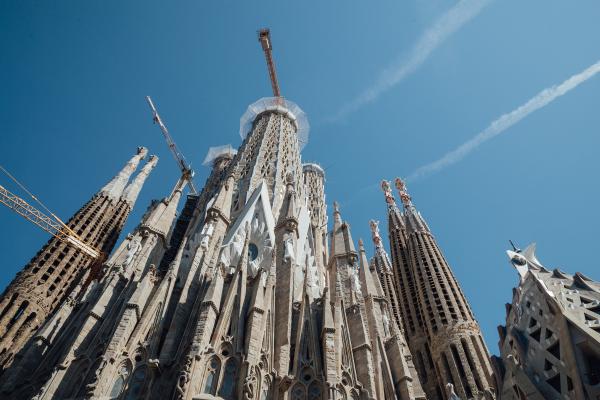
9. The face you see on that statue might belong to a random Barcelona local
When you're admiring those lifelike sculptures on the Nativity Façade, you might actually be looking at the faces of ordinary Barcelona residents from 100 years ago. To create super-realistic figures, Gaudí had real people pose as models.
Decades later, a Japanese sculptor named Etsuro Sotoo became the chief sculptor and added Asian faces to the same façade.
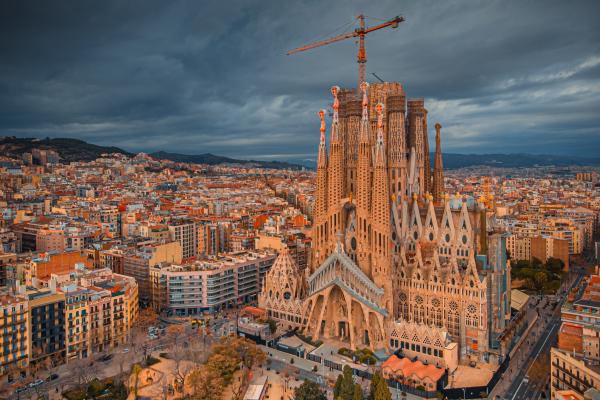
10. The stones come from all over Europe and each one is hand-carved
The Sagrada Familia isn't just made from local materials, it's built from stones gathered from across Europe. Gaudí initially used stone from Barcelona's Montjuïc mountain, but as construction continued, materials were sourced from quarries in Scotland, France, Spain, and other European locations.
These massive stone blocks can weigh more than 400 tons, which is roughly equivalent to 40 city buses. What's even more impressive is that these stones are cut by hand by skilled artisans, ensuring that no two stones are identical.
Planning a trip to Barcelona? Learn about the city's most important annual celebration in our guide to La Mercè Festival.
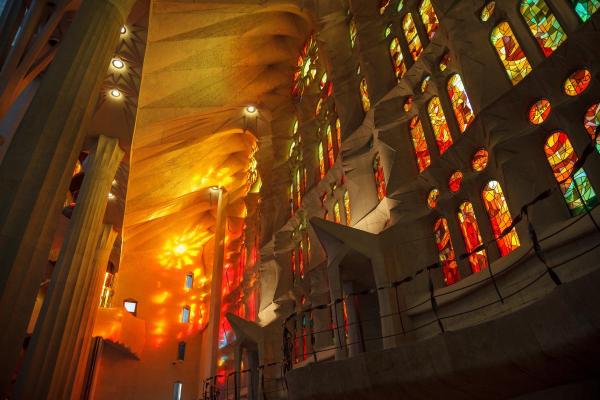
If you want to read similar articles to Surprising Facts About Sagrada Familia, we recommend you visit our Culture & Society category.
- Basilica de la Sagrada Familia. (2024). History of the Temple
- Ministerio de Cultura y Deporte, España. (2023). World Heritage Sites in Spain: La Sagrada Familia
- National Geographic. (2022, September 15). La Sagrada Familia: Ten curiosities of a temple carved in past, present and future
- UNESCO World Heritage Centre. (2005). Works of Antoni Gaudí